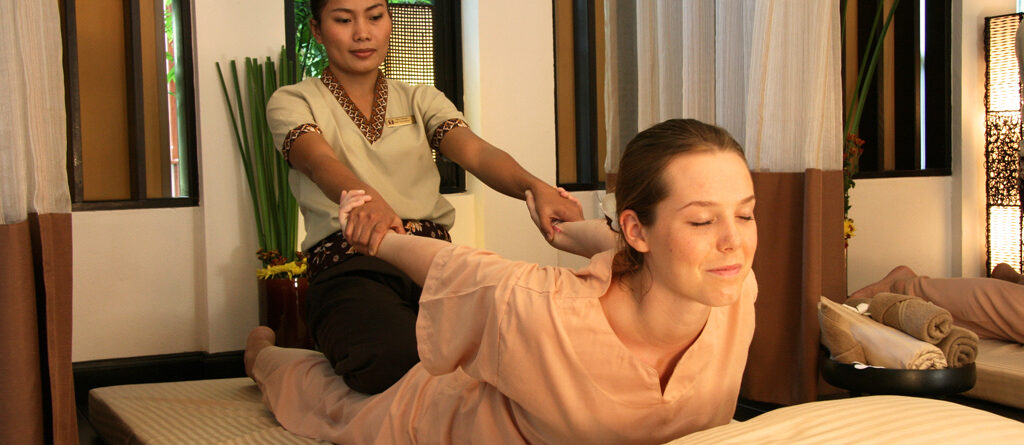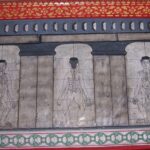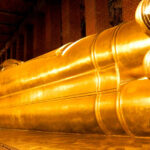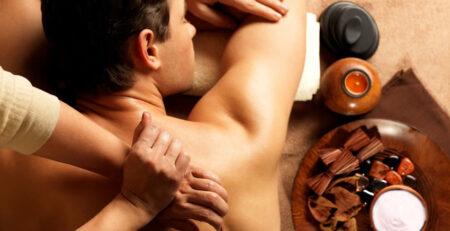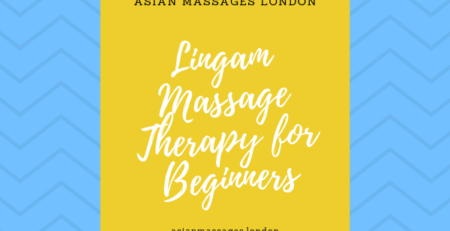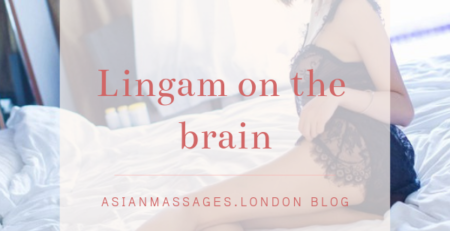The 411 on Thai massage
Thai massage is an ancient massage therapy that helps to promote good health and positive wellbeing. Practised for over 2,500 years, it works according to pressure points and lines down which mystical energy runs along. Thai massage focuses on massaging muscles and joints, and makes sure that the entire body is massaged. It fuses together massage therapy with yoga, so it’s not about releasing tension and muscular relaxation. Thai massage can help your body become stronger by improving flexibility and range of motion.
The history of Thai massage: back to its ancient beginnings
Traditional Thai massage has long played an integral role in manual therapeutic healing. Interestingly, Thai massage actually originates from India and not Thailand. It was said to have been founded over 2.500 years ago by Shivago Komarpaj, a legendary physician from North India. Not only did Komarpaj work with the King of Magadha, Bimbasara, he was also the friend and personal physician of the Buddha. Thai medicine was partly influenced by Chinese, Indian and South East Asian cultures, but most of the credit is given to Komarpaj.
Most of the recorded history of ancient Thai massage was lost in 1767 during the Burmese-Siamese war when Burma invaded Ayutthaya (the ancient and former capital of Thailand). After World War II, Thailand became known to the West and as it grew into a popular tourist destination, Thai massage was introduced to the rest of the world.
Modern day Thai massage
Thai massage is now a very popular type of therapy. In some ways, it’s similar to a Swedish massage or a deep tissue massage due to the way it digs right into the lower tissue levels and works to soothe even the most stubborn of muscle knots. Thai massage took off in the Western countries in the 1980s and in the beginning, many people thought it was going to turn out to be a fad – the next ‘it’ spa treatment that would run its course before slipping into the distance and never being heard of again. A few decades later and Thai massage, also known as ‘nuat phaen boran’, is showing no signs of slowing down in popularity. Millions of people are flocking to massage parlours, seeking out therapists who are qualified to perform Thai massages.
It’s difficult to find an authentic Thai massage because the spa needs a room with a large padded mat for the massage to take place on. This is specific to a Thai massage and it usually makes more economical sense to have a massage table as the majority of massages involve a table. It’s also difficult because a Thai massage requires special training. It’s not a case of just massaging the body. Thai massage also involves yoga-like stretching and aerobics.
What is Thai massage?
Thai massage is somewhat new to Western spas, but it’s actually over 2,500 years old and was founded around the time of the Buddha. It uses a series of yoga-like stretches and positions, assisted by the therapist, and applying gentle pressure along the body’s mystical energy lines. A Thai massage aims to increase flexibility, soothe muscle and joint aches and rebalance the body’s energies. A Thai massage is deeply rooted in spirituality, placing an emphasis on physical, emotional and spiritual healing. It is performed fully clothed, so people typically recommend it if you’re uncomfortable or shy about nudity.
How Thai massage works
Thai massage is one of the four traditional branches of Thai medicine. As we’ve said earlier, Thai massage is a millennia-old therapy that works to promote full body healing. The massage session usually involves a deep massage and stretching ritual. Unlike many other massages, Thai massage doesn’t involve a massage table. It takes place on the floor on a padded mat. It is highly therapeutic, providing an overall sense of relaxation and stimulating healthy blood circulation. A Thai massage helps to improve weak or disrupted organ function, flexibility and joint mobility, and treats stress, tension and anxiety.
Thai massage is slightly different from traditional massage as it works according to the body’s ‘energy lines’. Known as Sen Lines, theorists say there are 72 of these mystical lines running all down and around the body. These lines correspond with the pressure points in Chinese acupuncture theory and the ancient Indian healing system Ayurveda.
The principles of Thai massage: the Sen Lines
Sen lines form the theoretical foundation on which Thai massage is built on. Thai massage theorises that there are invisible energy lines running along the frame of the physical body. These are called Sen Lines and 10 of them, the ‘sib sen’, are particularly important to this massage. The background of this energy line theory goes back to yoga philosophy, which explains why Thai massage involves stretching and yoga positions.
The Sen Lines are thought of as the windows to the body. According to Thai massage theory, they are directly linked to internal parts of the body, from tissues and organs to bodily systems and even emotions. This is where they cross over with acupuncture, acupressure, yoga and even tantric massage. These all work according to energy lines and pressure points as well.
According to Thai massage, illness, whether it’s a physical ailment or a mental state like stress, is said to be caused when energy, known as prana, in the body builds up and causes a blockage. Blockages mean that the Sen Lines cannot efficiently transport energy around the body to rejuvenate the cells. Thai massage works along these lines, helping to break down the blockages and stimulating the flow of energy once more. This helps to restore wellbeing.
Thai massage and Buddhism
Buddhism and medicine tend to intertwine, and this is particularly the case in Thailand as it is 95 per cent Buddhist. In the past, the two sometimes crossed over so often that it was difficult to distinguish one from the other. There are three main principles of traditional Thai medicine: the body, the citta and the energy. There are many practices that existed even before Buddhism was introduced into Thailand, but as the years went on, they became intertwined.
Buddhism teaches the ways a person can purify their mind in order to escape suffering. Whether it’s a disease, depression, anxiety, stress or even harmful thoughts like greed and envy, Buddhism teaches you how to clear your mind. Traditional Thai medicine theorises that an impure mind can lead to illnesses so a clear mind means a healthier body. In some ways, this is true as we’re more likely to become ill when we’re stressed.
Rooted in Buddhism, Thai massage therapy follows the Four Sublime States of Mind – love, compassion, sympathetic joy and equanimity. Thai massage’s Sen Lines theory can be linked to Buddhism. When the Sen becomes blocked or damaged in any way, you are more likely to fall ill or attract symptoms of illness as energy clogs up in one area. This can represent the build-up of impure thoughts and negative energy referred to in Buddhism. That’s what Thai massage therapists aim to reverse. They aim to resume the efficient flow of prana and maintain good health of the patient’s Sen. When the Sens are free of blockages and undamaged, the patient is as healthy as they can be.
What happens during a Thai massage session?
In the hands of a highly trained therapist, Thai massage is a very individual experience, varying from person to person. Each session is tailored to meet the specific client’s individual needs, so the actual massage techniques may range from a slow, passive, deeply relaxing palm massage to energising deep pressures performed by the elbows and knees. There may be yoga stretches, tractions and twists of varying pressures involved. The mixture of slow rhythms and the firm touches work to create a powerful, dominant healing experience that leaves you in a state of sublime relaxation.
Thai massage is performed on a floor mat so the therapist can freely apply pressure using their elbows, knees as well hands to the client. The client wears loose and comfortable clothing, so Thai massage is a good option for people who are uncomfortable with nudity. The massage requires no oil, unlike many other Western massage styles, and yet it can still stimulate the deep tissues of the body.
A Thai massage therapist may use a variety of their hands, fingers, thumbs, elbows, forearms, knees and feet to manipulate various parts of your body. A mixture of acupressure, deep tissue stimulation, yoga, stretching and reflexology techniques are used. The massage pays particular attention to the musculoskeletal system, which refers to the bones, joints, muscles, ligaments and the connective tissues. Thai massage is very beneficial for people who suffer from stiff or sore muscles and joints, particularly from overexertion and sports activities. Thai massage will help the body recover physically, mentally, emotionally and spiritually. Tension from muscles will be released, joints will be loosened, circulation will be improved and lymphatic functions will be boosted so the body will be detoxified at a faster rate. And finally, the release of energy will leave you feeling extremely satisfied and refreshed.
Benefits of a Thai massage
There are many benefits that a Thai massage can give to an individual. It uses a mixture of pressures on the body’s energy lines and deep yoga-like stretches to relax the tense muscles, taking the body and mind to a deeper level. The slow movements allow for your body and mind to slow down – something that is particularly important, given this day and age of fast media. This deep level of intuitive relaxation is known to improve state of mind and affect your personal outlook on life. Here are some of the main benefits of a Thai massage:
- Relieving stress, anxiety and tension
- Promotes mental clarity
- Prevents stress-related issues e.g. mental breakdowns, panic attacks
- Boosts energy and stamina
- Improves general range of motion, joint mobility and general flexibility
- Improves balance
- Releases muscle tension, soreness and stiffness e.g. muscle knots, sports injuries
- Soothes certain types of back pain and muscle spasticity
- Boosts blood circulation
- Improves immune and respiratory systems
- Promotes an overall feeling of relaxation and positive mental wellbeing
How to get the most out of your Thai massage
- Wear light, loose, stretchy, comfortable clothing to the session
- Sessions are usually 60 – 90 minutes long
- Don’t eat a heavy meal before the massage
- Thai massage involves some deep pressure and creative yoga positions. It’s normal to experience initial discomfort or slight pain due to tight muscles, but always let your therapist know so they can adjust
- Always remember to breathe and relax your muscles and limbs so the therapist can freely manipulate your body. Only then can you experience the full range of benefits
- Be sure the therapist has your full health history as people with certain conditions are not recommended to have a Thai massage (e.g. some stages of pregnancy, if you’ve recently recovered from a bone fracture or you are bruised/have a rash/open wound)
Find the right massage for you
If Thai massage sounds good to you, then it’s definitely something you should try. If you’re craving something a bit more risqué and extraordinary with mind-blowing results, then there are other options out there. Asian massage london offer a blend of traditional massage techniques designed to relax your muscles, but also have the added option of nudity so you can experience physical and mental pleasure. The benefits are said to be long-lasting and totally unique. If you’re interested in exploring this type of naked, adult massage, then call the number below and book yourself in for a memorable session with a professional. Prepare to feel pleasure and relaxation like never before!


